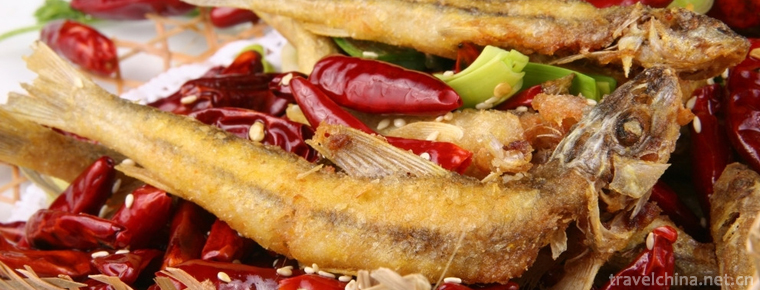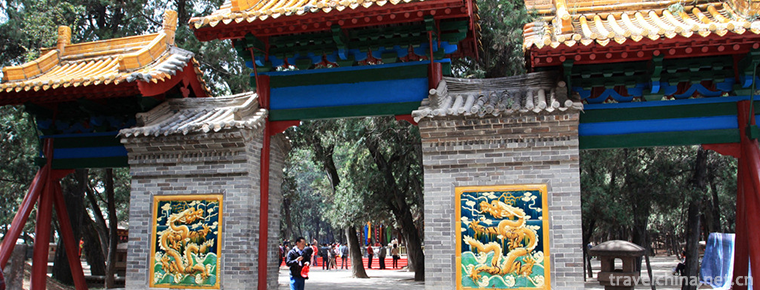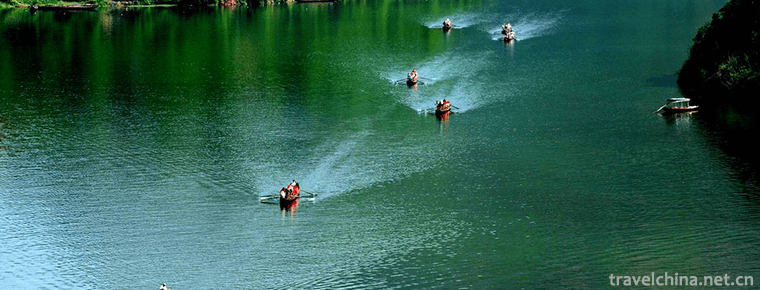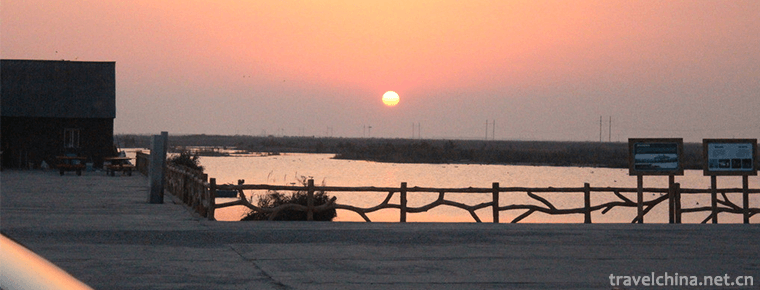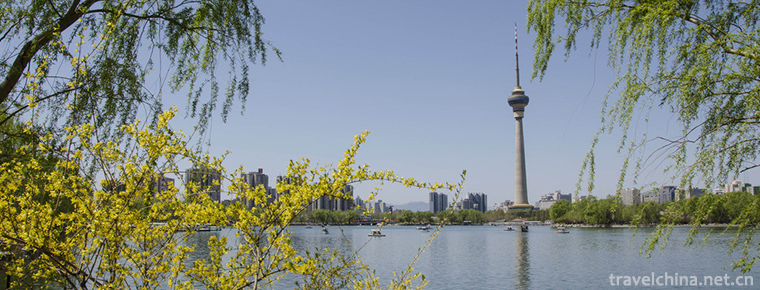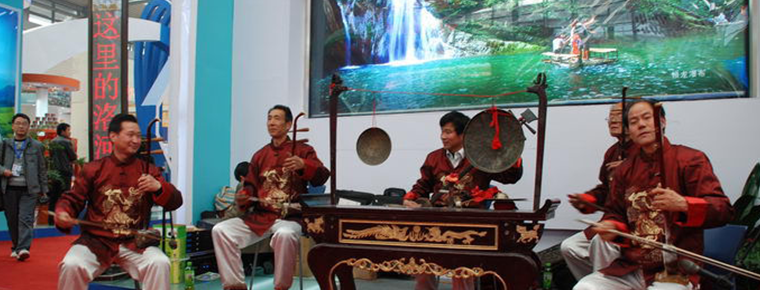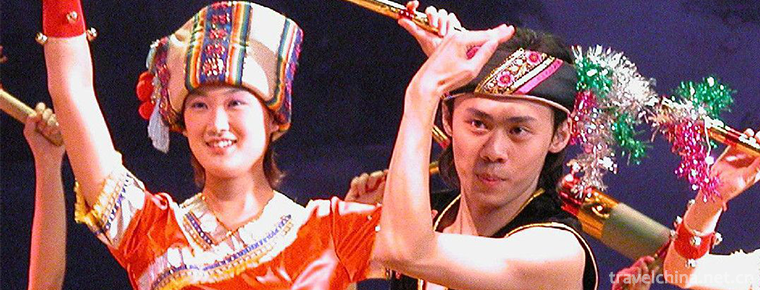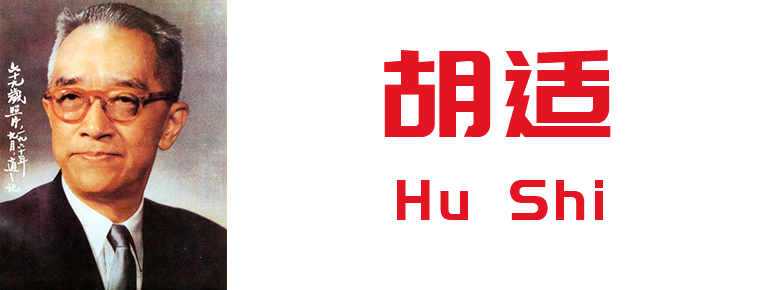Laojunshan Jiguandong Tourist Area
Jiguan Cave is located in Luanchuan County, Luoyang City, Henan Province, three kilometers west of the county seat. It is located on the half-hillside of Jiguan Mountain, a branch of Funiu Mountain in the Qinling Mountains, with an elevation of 1021 meters.
Jiguan Cave is a large limestone karst cave with karst landform. The length of Jiguan Cave is 5,600 meters. It has an ornamental length of more than 1,800 meters and an ornamental area of 23,000 square meters. Such caves are rare in the north and are known as the first cave house in the north.
On January 9, 2012, it was awarded the title of National 5A Tourist Scenic Spot by China National Tourism Administration.
Cockscomb Cave was found in the reign of Qianlong in Qing Dynasty. Old "Luanchuan County Chronicle" said: "Cockscomb Cave, there are four halls, such as the cave of dragons and snakes", "bats such as weaving, dangerous like four volts", "there are woodcutters, knives and sticks, and groups with candles to enter", "deep and unpredictable, afraid to return." In August 1992, the county Party committee and the county government decided to develop the cockscomb cave. Under the leadership of the county cultural bureau, the county tourism development company has invested 1.8 million yuan to build brand-name buildings by opening new entrances and exits, paving roads in the caves and installing lights. It was completed on March 31, 1993 and opened on April 10.
By 2000, 681,000 tourists had been received, with box office revenue of 10.49 million yuan and profits and taxes of 500,000 yuan. It is the top ten tourist attractions in Henan Province.
In November 2005, with a total investment of 88.03 million yuan and an area of 101 mu, Jiguandong Alpine Peony Garden was completed in the scenic spot. A total of 46,000 peonies of 18 kinds and 180 varieties were planted in the garden, including Wei Zi, Yao Huang, Erqiao and Luoyang Hong. The florescence of Jiguandong Alpine Peony Garden is the golden week of May Day every year.
Jiguan Cave is a limestone karst cave. The landscape mainly consists of stalagmites and stalactites. The chemical constituents of stalagmites and stalactites are calcium carbonate. Calcium bicarbonate solution is formed by the co-action of carbon dioxide in rainwater and air. Hydrogen is released during the flow and dropping of the solution. The remaining calcium carbonate solidifies and petrifies thousands of stalagmites and stalactites. Stalagmites and stalactites increased by 1 cm in 100 years. Geologists have determined that the Yicai Hall has been formed for about 600 million years, of which the Dolphin play pearl stalagmite was formed for about 54,000 years. The stone flower in the cave is a calcite flower, a crystal of carbonate. It must adhere to the Moonstone and diffuse around under the action of non-gravity water, forming flowers year by year. Shield, curly stone and E-tube record the complicated forms of fluid dynamics. Cockscomb Cave has a high ornamental value, but also involves physical, chemical, geographical, meteorological, natural and other aspects of the content, multi-disciplinary implications, making it a precious natural heritage.
The cockscomb hole is 5600 meters deep, divided into five layers, with a drop of 138 meters. The cave has been developed with a length of 1800 meters and an ornamental area of 23,000 square meters. It is divided into eight scenic spots. They are named Yuzhutan, Yicai Palace, Yiwu Palace, Dongtian River, Juxian Palace, Yaochi Palace, Tibetan Xiuge Pavilion and Shilin Square in turn.
Yuzhu Tan
To the entrance of the cave, through the artificial tunnel of 30 meters long and 2.5 meters high, we can enter the first scenic spot, Yuzhutan. The top of the cave is 49 meters away from the ground and can accommodate more than 500 people at the same time. In the scenic area, stalagmites and pillars are densely distributed, with different heights and thicknesses. It is the most concentrated scenic area of stalagmites and pillars in the cave. Because there is a pool of clear underground water, the scenic area is named "Yuzhutan".
Fairy Welcome Fairy View
In front of the pool, there are several stalagmites, like a small fairy smiling and waving to greet tourists, named "Welcome all the immortals", of which the highest stalagmite is 0.9 meters, the lowest is 0.6 meters. On the wall of the cave on the left side of the 10-meter road, there is the earliest cave entrance with a diameter of 0.94 meters. Although it is small, it is the only way for people to get in and out before. If you go 15 meters further, it is the most concentrated place in the first scenic spot. Here you can see the landscape of "Golden Turtle Duxian" on the right side of the tourist trail. The huge "Golden Turtle" consists of three naturally accumulated rocks. On the back of the "Golden Turtle" grows a stalagmite 1.1 meters high, like a white beard with a high hair tie and a micro-camel on its back. Fairy. Just in front of this landscape, there is a stone niche on the wall of the tunnel 18 meters. There is a stalagmite 0.3 meters in diameter and 0.8 meters in height inside the niche, which is very similar to a fairy with a pointed cap. On the left side of the fairy, there is a stone shield, 0.4 meters in diameter and 0.94 meters in height. Its shield falls and folds, like a short sleeve blouse floating with the wind, and the landscape is combined. It is called "immortal airing clothes". Located at the lower right of "fairy clothes drying", there is a landscape "snow goat's feet" which is like a flowing stone of goat's jubilant jump.
Tin dog guarding the moon
On the wall of the cave, 22 meters in front of the "Golden Turtle Du Xianweng", there is a triangular wall-flowing stone. From the top down, there are stalagmites ranging from 0.4 to 0.5 meters in height. It seems that five Buddha statues sit on the mountain body and are named "Wufo Painting Mountain". A stalagmite resembles an alert wolf dog, with ears erected. On the top of the cave on its left, there is a natural ventilation vent with a diameter of 0.8 meters. It goes up to the top of the mountain to 38 meters, like the bright moon hanging on the top of the cave. The landscape is called "Heavenly Dog Watching the Moon". This is the only natural vent in the cave.
Overflow Hall
The second scenic spot Yicai Dian is the earliest cave formed in the cave, about 600 million years ago. It is named for its open terrain, like a canyon, stalactites hanging on the top of the cave, and stalagmites scattering all over the ground.
Standing at the center of the second scenic spot, overlooking the bottom of the valley of "Yicai Dian", there is a stalagmite with a diameter of 0.45 meters and a height of 0.7 meters. It is like an old longevity star with benevolent eyebrows. The rock on its left is like a crocodile with a length of 2.83 meters. It looks like it is listening to the advice and understanding of "longevity star". This scene is named "Crocodile Salute Life". A group of stalagmites, like a tiger, are pulling forward a mountain peak on the hillside 5 meters ahead of here to add treasure to the splendor of Yicai Hall, named "Baihu Layu Peak". There are two stalactites on the right wall of the cave, one of which is like a fish's tail stuck in the mouth of the cave. They are called "carp jumping the Dragon gate". The other is like a hippopotamus popping out to enjoy the beautiful scenery of the world. It opens its mouth and stares at its eyes. Its rich expression is amazing and calls it "hippopotamus peek". Browse the beautiful scenery to the corner of the trail. On the left side of the road, there are dolphins leaping out of the water. Red balls on the top of the head show off their elegant demeanour for the guests. They are named "Dolphin Play Pearl", which is vivid.
From the second scenic spot to the third scenic spot, the drop is nearly 30 meters, passing a 75-meter-long step road. Down the road, you can see two stalagmites on the left side of the road, one of which is 1 metre in diameter and 2.73 metres in height. It is nicknamed "Long March No. 1 Rocket" and is about to be ignited. The other stalagmite, 0.88 metres in diameter and 2.1 metres in height, is like an old man with a snowcap and a cloak, and braves the heavy snow.
Fold Palace
The third scenic spot, Duanxiong Palace, named after the stone mantle lined up on the top of the cave, is one of the most wonderful halls in the cave. Large areas of stalactites are suspended on the top of the cave.
Entering the third scenic spot, the first thing to be seen is the landscape "pilohan", which is a 4-meter-high, straight stalagmite, named after three small round-topped stalagmites like three fat groupers sitting on top. After that, you will find that the stalagmites are inclined by the slope, like to be comparable to the Leaning Tower of Pisa, changing scenery step by step, viewing in different positions, will give people unexpected effect, this landscape is also the landmark of the external publicity of the scenic spot. Along the sightseeing trail to the viewing platform, a distinctive stalagmite is presented in front of us. The lower part is 1.3 meters in diameter, 2 meters in height, 0.54 meters in diameter and 1.1 meters in height. Because the upper part looks like a woman with long hair shawl, looking forward to the return of her loved ones, it is named "Wangfushi". It is also in the "Wangfushi" left front 13 meters on the cave wall, there is "Luohan drunk". This is a white wall rubble about 4 meters high, like a drunk sleeping fat-bellied Luohan, open-minded, incomplete clothes, alarm, but also hide the head, the funny shape makes people laugh. On the right side of Wangfushi is a pinnacle stalagmite "General Stone" with a diameter of 0.7 meters and a height of 1.87 meters. It is a general living off an ancient battlefield, dressed in battle robes, with a long sword on his waist, with extraordinary bearing and vigour.
From the third scenic spot to the fourth scenic spot, before passing through a mud hole less than 1 meter in diameter and 5 meters in depth, it was very inconvenient to move up and down with ropes. After artificial reinforcement and construction, it formed a spiral passageway - Jade Snail.
Cave Tianhe
Passing through Jade Conch is the fourth scenic spot, Dongtian River. The long-running underground river rushes out from the cracks in the rocks. Without knowing where it comes from, the underwater sound shocks the eardrum and the scenic spot gets its name. The daily discharge of this river reaches 600 tons. Sampling and testing by Henan Institute of Geology shows that the river water is rich in more than 20 trace elements, such as iron, potassium, calcium, zinc and magnesium, which are beneficial to human body. It is a kind of high-quality mineral water. From the first iron ladder up, you can see that the left wall of the cave is covered with snowflake-like stones, white, transparent, crystal, called snowflake stones. On the right side of the road 2 meters away from Snowflake Stone is a horizontal pool with an area of about 3 square meters. It has not been affected by drought and flood for many years. The water level has always been moderate, and it is named for not fluctuating. It is one of the wonders of the cave.
On the second section of the ladder, you can see the grape-shaped stone flowers dotted with fluorescence on the wall of the cave, which are very precious, either in clusters or scattered into pieces. The stone pillar with a diameter of 0.05 meters and a height of 3.1 meters, which is uniform in thickness and erect, is also called "Dinghai Needle". It is also the finest stone pillar in the cave, and it belongs to the key protected landscape. And 3 meters away from the stone grapes, the cave wall is covered with a layer of budding stone flowers, like coral in the sea, shining, these are coral stones.
Ju Xian Palace
In the fifth scenic spot, stalagmites have different forms, such as the gathering of immortals, so they are called "Juxian Palace".
The ground of Juxian Palace is 28 meters apart from the top of the cave. The first thing you can see in the palace is a huge mountain-like sediment, which is 8 meters high and 60 meters long. There is a 23-meter-wide and 19-meter-high rubble on the whole cave wall perpendicular to it at the right end. It is like a waterfall falling down in a rush and has great momentum. It has been found so far in the cave. The largest and most complete waterfall. A stone niche is formed at the junction of the waterfall and the cave top. There is a "fairy bed" in the niche. The beds and beds are distinct. The size of the niche is the same as that of the real object. It is wonderful. From right to left on the Amber Ridge, there are numerous landscapes, such as "Drawing Sutras from the Western Heaven", "Eight Immortals Crossing the Sea", "Baota Mountain", "Mushroom Stone". During these landscapes, the figures are vivid: "Tang Monk" wears a peaceful look on his head, "Wukong" opens the road sweating on his cheeks, and the "Eight Immortals" have different feelings. Zhang Guolaogeng It is "riding a donkey upside down" with ease and complacency, plus the ornament of "pagoda" and "mushroom", true or false, and true in the fake, such as in the imperial court.
Standing at the center of the Amber Mountains, the stone pillars are 13 meters in diameter and 28 meters in height. They are magnificent and magnificent. They stand at the top of the cave. The water seepage from the top of the cave slowly flows down the column body, making the stone pillars appear extraordinarily glittering and translucent. They are known as "Jade pillars to raise the sky". On the left side of the scene, there is a white stalagmite with a diameter of 0.9 meters and a height of 1.7 meters. It looks like an old longevity star embracing a fairy peach. It is kind and smiling. So it is called "longevity star embracing a peach". There is "longevity star companion" 2 meters above the left of "longevity star". Beautifully embracing grandchildren and smiling to welcome guests from all over the world. In the fifth scenic spot of Xinbu, the stone flowers on the cave wall are clustered into pieces, like chrysanthemums blooming in full bloom and fighting for beauty. Among them, the largest chrysanthemum stone is 0.3 meters in diameter, with huge flowers and peculiar shapes. It is known as the "King of Cockscomb Stone Flowers".
Yao Chi Palace
In the sixth scenic spot, Yaochi Palace not only has many rare and rare landscapes, but also has a lot of scientific research value, and there are many "three scenic spots" in it.
The entrance to the Yaochi Palace is very dangerous and narrow. There is a smooth stalagmite on both sides of the entrance. If illuminated by light, the whole body is bright and brilliant, so it is called transparent stone. Yao Chi Palace is named after a pool of clear natural pool water at the entrance of Nantianmen. There are nine stalagmites growing in the water, one of which is like a carefully carved "Queen Mother's Throne" with a diameter of 1.6 meters and a height of 3.1 meters. In front of this scene, a stalagmite lies horizontally, like a sea lion playing in the water; and on the wall of the cave in front of its left. Silk drips fall on a thick stalagmite, like a big fat carp opening its mouth to catch water. The landscape is named "carp playing with water", especially the mouth, head and body of "carp", especially the "scales" of "carp" body. What's more wonderful is that the water seeping from the hole wall falls into "carp" just like a silver line. In the open mouth of the fish. Close to this beautiful scene is a huge sediment covering 67 square meters, Baiyu Mountain. Baiyu Mountain is carved like white jade, hollow and smooth. Between Baiyu Mountain and the landscape "carp playing water", there is also a "Tiangong Ice Lamp" with a diameter of 0.53 meters and a length of 0.61 meters. It seems to be an ice hanging in the severe winter, and also like the lamp in the palace, with clear lines, smooth edges and sharp corners. Here, on the top of the cave, there are also dense clumps of transparent hollow goose pipes growing vertically. There are as many as 200, up to 0.7 meters. Corresponding to the landscape "carp splashing in water" is a standing stone shield, 1.5 meters high and 0.7 meters in diameter. Because of its unique origin, together with its huge and rare shape, it has the reputation of "the first shield in Asia".
The seven-storey pagoda of Zhendong is a stalagmite with a diameter of 0.3 meters and a height of 0.8 meters. It is lifelike in shape and conforms to the style of tower architecture in ancient China. Its neatness and regularity are impeccable. Looking up at the top of the cave, you can see a hanging stone shield on the wall of the cave. The shield is horizontal with a diameter of 2.8 meters. In addition, there is a curtain-like shield falling around the shield. Even compared with the imperial parachute of ancient emperors, it is rare in China.
The next scenic spot can choose the photographic platform of the sixth scenic spot. Along the way, you can see stalagmites, such as monkeys, puppies, or white pigeons scattering along the roadside, which are very interesting. Especially the stalagmites in the middle of the road, called "stumbling blocks", are said to be able to step over the clouds and rise steadily. On the right side of the stumbling block, there are also sheet stalactites connected with the ground, forming a stone Qin with a whole width of 3.2 meters and a height of 2 meters. The stone Qin is arranged neatly and compactly, and can produce a pleasant and pleasant sound with a light stone tap. The sound of the Qin is clear and crisp, and the sound is curling. When standing on the photographic platform, the most eye-catching sight is a huge stone pillar. After measuring the formation time of the pillar is about 5 million years, the pillar body naturally forms an exquisite relief pattern, which resembles the inverted golden dragon. The dragon head, the Dragon body, the dragon tail and the dragon claw are clearly distinguishable. It is named "Panlong Jade pillar" because of its magnificence and long formation time. Dragon-shaped design is unique in China and is called "the first pillar of China" by authorities.
The difference between the sixth scenic spot and the seventh scenic spot is 32 meters. Only by climbing a natural tunnel 80 meters long can we reach it. There are a lot of calcite crystal flowers growing on the wall of the tunnel. They are snow-like, chrysanthemum-like and coral-like. From small to large, they are a huge group of crystals, which is very precious. The "Stone Peony" is the largest stone flower with a diameter of 0.14 meters. It is pure and bright, and has a national flavor. It can be appreciated from the sixth scenic spot photographic stage up to the left wall of the 33 steps road. There is also a small shield with a diameter of 0.16 meters and a height of 0.14 meters on the wall of the cave in front of the white peony. Like a small embroidery dish, it is also the smallest shield in the cave.
Tibetan Pavilion
The seventh scenic spot, Zangxiu Pavilion, is a small scenic spot in the cave. The area is small but exquisite, and the landscape is dazzling. The top of the cave has a hole with a diameter of 1.6 meters. Looking from the cave, we can see that there are many stalagmites and stones in the cave. The scenery is charming. The stalactites hanging around the cave are like curtains. Therefore, the development of the cave has not been completed and the whole landscape can not be appreciated, so it is called "Tibetan Xiuge". Among the stalactites hanging at the entrance of the cave, one stalactite corresponds to the stalagmite growing on the ground. The difference is only 1 centimeter. According to the calculation of geological experts, it takes 40 to 70 years for the stalactite to grow up and down at the same time according to the normal drip volume. Therefore, the landscape is nicknamed "one kiss per thousand years".
Another attraction here is called "couple stone", which is made up of two tiny stalagmites after a long time, as if a couple of passionate lovers are snuggling together, its position is 2.5 meters forward on the same side of "one kiss for a thousand years". The right front of the "Lover Stone" is a stalagmite 1.2 meters high, with a round spire and 11 levels of clear identification. It has the architectural style of the Islamic pagoda. The flag growing on the opposite wall of the "couple stone" is flaky stalactite, which is deposited along the flow of water along the zigzag stone crevice at the top of the cave and is shaped like a flag waving in the wind.
Shi Lin Fang
The eighth scenic spot, Shilin Square, is the last scenic spot developed in the cave. The scattered landscape and complex causes are the characteristics of this scenic spot. The most attractive part of the scenic spot is a series of stalactites hanging neatly on the wall of the cave, forming a stone curtain with a width of 8 meters and a length of 6.4 meters, especially the stone forest hanging upside down, which can equally divide autumn with the South Stone forest. In front of the stone curtain, there is a pool of blue water, named "lotus pond" because of the growth of lotus pots in the water. Lotus pot is round or elliptic, flat surface, thin edge, like lotus leaf floating on the surface of water, it belongs to gravity water and non-gravity water or gravity water in a variety of forms of motion, multi-mechanism synergistic product. Only four caves were found in Jiguan Cave in the north. The water surface of the lotus pond is as calm as a mirror, reflecting the view of the top of the cave, which clearly shows the underwater world, coral clusters, deep valleys, mysterious and unpredictable. Looking back to the right, the drifting water from the cave wall forms sediments on the ground like layers of terraces, named "driftstone dam". On the same side of the curtain, there are two adjacent growth shields on the wall. One shield plate with a diameter of 0.51 meters is opposite to the viewing platform, and the other side is opposite to the direction of 0.77 meters. It forms a strange scene of Yin and Yang, which is called "Yin and Yang Shield" by geologists. It is rare in the world. Finally, located on the right side of the stone curtain, a 4.8-meter-long mixed sediment resembles a tortoise, whose direction of travel is facing the exit, so it is named "Silver Turtle Direction".
In addition to the eighth scenic spot, Shilin Square, through a 120-metre, 2.5-metre-high man-made tunnel can be out of the hole.
Landscape characteristics
Yuzhutan exhibits karst geomorphological features in different sizes of stone pillars. The pillars are the result of the linking of stalagmites and stalactites. The Wufo Painting Mountain, which is composed of stalagmites, is an interesting landscape. The hall is tilted and hollow. There is a group of stalagmites called crocodiles. The secret to its longevity is that its conscientious idea of life is favored by tourists. The top of the cave is hung densely with stacked palace flags and mantles, and the ground is covered with stalagmites. Among them, the jade-white inclined tower is a fascinating landscape with clear layers, exquisite and exquisite, and inclined by the slope. Yaochi Palace is 28 meters high, with an area of 1600 square meters and dense landscape. Baiyu Mountain runs through the north and south, with stalagmites on the top of the mountain lined up like pavilions and pavilions; hillside waterfalls hanging like curtains; cave top conical stones like ice hanging. Chrysanthemum stone and snowflake stone cluster into pieces, glittering and translucent. The water in the Lotus Plate Pool in the cave, the stone lion's head held high and the elephant's nose raised, was lifelike. Stone pillar in the middle, three people can hold, winding dragons around phoenix, antique fragrance. A seven-storey stone pagoda at the bottom of Zixia Valley is small and exquisite. It is well-regulated and impeccable. The six-sided stone shield of Yaochi Palace and the curly stone and E tube of Tibetan Xiuge Pavilion are the treasures of karst cave landscape. They shine with stalagmites and stalactites.
Scenic spot culture
According to local folklore, Jiguan Mountain is made up of cock bones suppressed by eagles who sneak into the cave to search for treasures. Looking at the mountain from afar, its outline is very similar to that of cock crowing and crowing, so it gets its name. Jiguan Cave is hidden in Jiguan Mountain. The mountain is named by its shape and the cave by its name. Pinus bungeana is rooted in rocks on Jiguan Mountain. Birches are forested, Forsythia is all over the country, and there are clusters of azaleas on both sides of the red trail. There are two beautifully painted temples on the mountain. On the first and fifteenth day of the first day of the lunar new year, it becomes an important place for pilgrims to offer sacrifices and vows. All sides came together to worship, and there was an endless stream of petitioners.
On the right side of the road at the entrance of the scenic spot, there is a landmark stone of the scenic spot. This is a natural rock from Taowan Town Suotun Ridge, Luanchuan County, the source of the Yihe River. It is oval and belongs to granite rock. Its body is beige, its diameter is 2 meters, and its weight is 10 tons. Celebrity ink is engraved on both sides of the rock. On the front is the "Cockscomb Cave" inscribed by Wang Guozhen, a famous Chinese poet, and on the back is the inscription of Mu Qing, former president of Xinhua News Agency, "The First Cave of the North Country". The landmark stone is placed on a base 1.2 meters high, which is made up of dozens of square coarse granular granite and covers an area of 5 square meters. The front and back of the pedestal are inscribed with the words "National AAAA Scenic Area" and "Ten Best Tourism Scenic Areas in Henan Province" engraved on black marble respectively.
From the upstream of Xiaoshuangtang River in the scenic area, nine arch bridges have been built, including Jinji Bridge, Fengming Bridge, Longyin Bridge, Pingyun Bridge, Buyun Bridge, Rainbow Bridge, Qiming Bridge, Morning Bridge and Chaoyang Bridge, which form another bright spot of the scenic area's peripheral landscape. The railings of these arch bridges are carved from white marble of Han Dynasty. Looking at the bridges from afar, they are like white ribbons flying in the air. In addition, the rivers under the bridges are murmuring, which really have the poetic and picturesque flavor of the flowing water of the bridges.
It is 110 meters away from the landmark stone of the scenic spot. There is a painted archway building in Ming and Qing Dynasties. It is 20 meters wide and 15 meters high. It has four columns, three doors and five colors on the third floor. On the front and back of the archway hang a black flat forehead 2.5 meters long and 1.3 meters wide, engraved with the inscription of Liao Hansheng, Vice Chairman of the National People's Congress, "The First Cave of the North Country", the whole simple and elegant, magnificent. And there is another archway above the 46 stone steps of the scenic area central plaza, which is 8 meters high and 11 meters wide. It belongs to the Ming and Qing architectural pattern. It has four pillars, three doors, five colors on the third floor and eleven domes. It hangs two meters long and one meter wide flat forehead on the top. The five letters on the flat forehead are inscribed by former Xinhua News Agency President Mu Qing when he came to the scenic area to collect wind in 1993. One hole ", the font is vigorous and powerful. The relief carvings depicted on the archway are antique and magnificent. Four columns with a diameter of 0.5 meters form the support of the archway. There are 56 dragon reliefs in different shapes on the archway, and the auspicious clouds depicted on the top of the four pillars, implying the unity and progress of 56 nationalities.
Scenic spot honor
Jiguandong Scenic Area has won more than 30 provincial and municipal honorary titles such as "Provincial Scenic Spot" and "Ten Best Tourism Scenic Spots in Henan Province". In August 2002, Jiguandong Scenic Spot passed the acceptance of the National Tourism Administration at one time and was rated as "National AAAA Class Tourist Spot". On Jan. 9, 2012, Jiguandong was awarded the National AAAAA Tourist Scenic Spot.











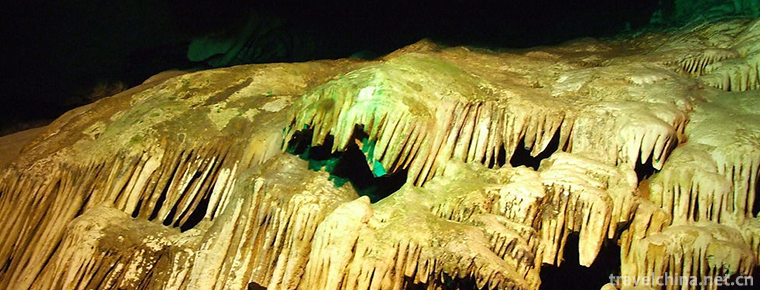
-
Dali arched fish
Dali aToxoplasmus dali, commonly known as fine-scaled fish.
Views: 235 Time 2018-10-17 -
Ancient Huizhou Cultural Tourism Zone
Huangshan Ancient Huizhou Cultural Tourist Area is located in Huangshan City, Anhui Province, north of Huangshan Mountain, south of Qiandao Lake.
Views: 157 Time 2018-12-08 -
Huangdi Mausoleum Scenic Area
Huangdi Mausoleum is the tomb of Xuanyuan Huangdi, the ancestor of the Chinese nation. It is the only Huangdi Mausoleum recorded in Historical Records..
Views: 152 Time 2018-12-12 -
Chongqing Yunyang Longgang National Geological Park
Yunyang Longgang Scenic Spot: National AAAAA Class Tourist Spot, National Geopark and National Day 2016 "Best Tourist Service Scenic Spot".
Views: 296 Time 2018-12-12 -
Sanyoudong Scenic Area
The Three Tours Cave Scenic Area is located outside Xiling Gorge, about 10 kilometers away from Yichang. There are two allusions to the name of Sanyou Cave. The Tang poets Bai Juyi, Bai Xingjian.
Views: 137 Time 2018-12-19 -
Yellow River Estuary Ecotourism Area
The Yellow River Estuary Ecotourism Area is located in the Yellow River estuary area of Dongying City, Shandong Province. It has unique ecotourism resources of the Yellow River Delta.
Views: 151 Time 2019-01-18 -
yuyuantan park
Yuyuantan Park, AAAA grade scenic spot, is located in Haidian District. East Gate is adjacent to Diaoyutai State Guest House; West to West Third Ring Road is separated from CCTV Tower; South Gate is n.
Views: 164 Time 2019-03-08 -
Roast duck skills
Quanjude hanging oven roast duck is a local traditional handicraft in Beijing. Quanjude Roast Duck Restaurant, a well-known old Chinese brand in Beijing, was founded in 1864 by Yang Quanren..
Views: 192 Time 2019-05-08 -
Luonan Jing Blackboard
In 2011, Luonan Jingbanshu was approved by the State Council and listed in the third batch of national intangible cultural heritage list. As early as in the Daoguang period of the Qing Dynasty (around.
Views: 133 Time 2019-05-15 -
Mi Luo Tuo
Milotta is a myth and ancient song spread in the Yao nationality inhabited areas of Du'an and Bama in Guangxi. It integrates myth, creation and hero. It describes the heroic achievements of the goddes.
Views: 147 Time 2019-06-04 -
Hu Shi
Hu Shi (December 17, 1891 - February 24, 1962), who used the name "Xi Jiang", learned the name of Hong Kong, and later changed his name to the right word. A thinker, a writer, a philosopher..
Views: 163 Time 2019-09-07 -
Population of Mianyang
By the end of 2018, the total number of households in Mianyang was 2 million 61 thousand and 800, and the registered residence population was 5 million 362 thousand. At the end of the year, there were 4.857 million permanent residents, with the urbanization.
Views: 110 Time 2020-12-14
